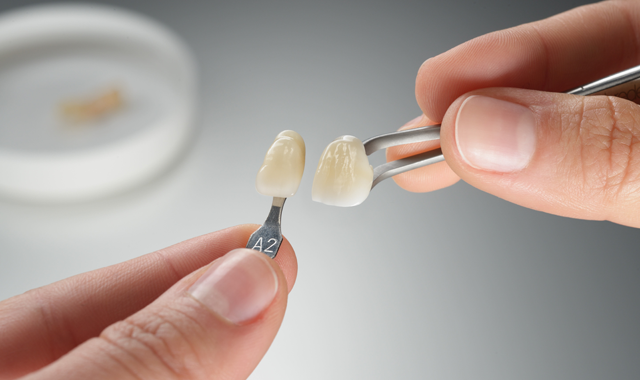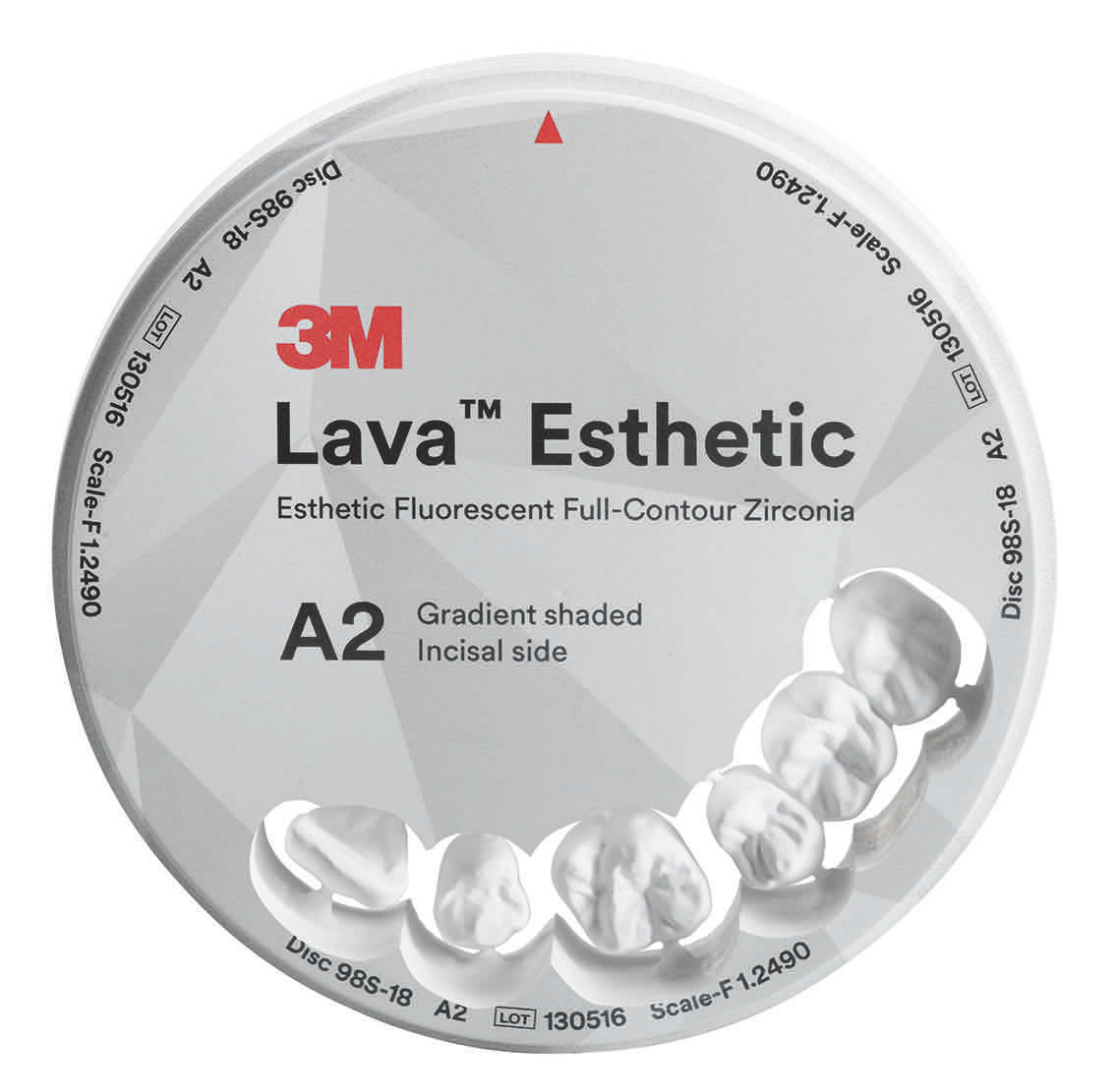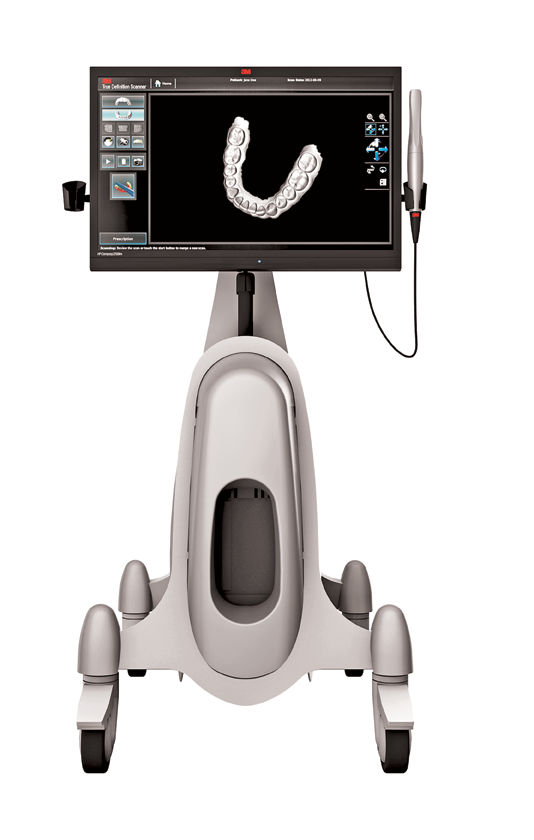The digital workflow with 3M
How the 3M™ True Definition scanner and Lava Esthetic Zirconia help streamline the lab workflow.

The goals of Scripps Center for Dental Care are to provide the very best in technology, amenities, techniques, and materials and the safest, most comfortable experience possible for their patients.
The goals of Thayer Dental Lab are to enhance the quality of patient care and offer dentists the latest advances in dental technology.
To facilitate those goals, the respective dentist and lab technician at these businesses - John F. Weston, DDS and Craig Yoder, CDT - utilize the digital workflow offered by 3M. Dr. Weston uses the 3M True Definition Scanner to take and send digital impressions to the lab, while Yoder uses 3Shape Dental Manager to design the restorations and 3M™ Lava™ Esthetic Fluorescent Full-Contour Zirconia to mill them.

“When it comes to submitting digital scans to the lab instead of sending rubber impressions in the mail, it’s just an incredible time savings on both ends,” says Dr. Weston. “With digital impressions, we deliver everything via the internet and secure 3M cloud-based data storage system. Also, though most cases are model-free, when an actual model is used, the lab does not have the stone model work to deal with. They can order and receive in a few days a very accurate 3D printed, articulated trimmed and pinned model ready to go via 3M’s trusted SLA printing connection. And the models are cleaner and often more accurate than traditional stone and plaster models.”
Technique: How going digital can revolutionize esthetics
“Currently, scanning is becoming the new preliminary department, versus the traditional pour-and-trim,” says Yoder. “Of the restorations we produce, 97 percent are digital in one way or another.”
Craig says that Thayer has used CAD/CAM to drive a complete shift away from traditional waxing. They now utilize scanning and design software to either mill or print restorations. This shift has transformed the laboratory, from labor, staffing and equipment resource requirements.
“There’s a tremendous amount of IT involved, new computers, scanners and the licenses involved, and multiple milling machines, 3D printers and sintering ovens,” says Yoder. “There’s also less labor involved in the artistic end of it in the ceramics department, resulting in more time to create beautiful, esthetic, functional, consistent restorations. We now have faster turnaround times, especially with the intraoral scanners and virtual manufacturing versus traditional impressions. Regarding cost, there are significantly fewer manufacturing steps by eliminating waxing, investing, casting/pressing or layering, so it’s more efficient in many ways.”
More on 3M Lava Esthetic Zirconia: 3M introduces new super translucent zirconia
That efficiency is also evident in Dr. Weston’s practice.
“Once you truly integrate a new workflow like digital scanning for impressions into your practice, it permanently and fundamentally changes how you structure everything,” says Dr. Weston. “Our chair time is less because adjustments are few and far between, so the entire team - from front office scheduling to supplies and assistants - has time to make the paradigm shift to fully take advantage of the benefits. Take, for instance, the simple conversion from analog to digital X-rays, the time savings, the consistent quality of image and the patient perception. I could go on. It’s really a game changer in my opinion.”
Next: The workflow
Workflow
In the traditional workflow, a dentist would never imagine getting a case to a lab while the patient was still in the chair. It would be impossible. With digital scans, it’s typical.
“There are no bags, boxes, postage or packaging,” says Dr. Weston. “When working with implants, the time savings is dramatically reduced and we are able to provide for a custom abutment and crown simultaneously in a single impression visit, compared to multiple visits in the past. Since we are 100 percent digital for all our crown and bridge work (including larger veneer cases, bridges and implants), it’s a benefit we see and use every day.”
The changes in the lab are just as striking.
“We only have one wax pot versus eight only six years ago,” says Yoder. “There’s very little waxing involved. Nearly all restorations are designed in 3Shape Dental Manager or some other form of CAD. With any conventional impression we receive, we digitize them by scanning them into 3Shape. With intraoral scanners, they arrive directly into a portal to our 3Shape Model Builder. That bypasses all the traditional steps of manufacturing. We are approaching 10 percent intraoral scanner impressions at this point and growing, compared to six percent two years ago. Intraoral scanners and virtual (model-less) crowns have been growing exponentially.”
The technicians then manipulate the contacts, function and contours of the restorations.
“We have each doctor’s parameters and preferences built in so we can predictably shorten their seating times,” says Yoder. “We nest those restorations in a software and immediately transport that data into one of our five-axis milling machines. The mills create an extremely accurate marginal fit and contour in the ‘green’ state zirconia. We then remove the restorations from the disc. We utilize three ShenPaz Sintra Plus ovens that are identically calibrated. 3M Lava Esthetic Zirconia is sintered at 1,500 degrees for five hours. We’re currently producing over 200 units per month, which is an increase of 100 percent since November 2016.”
Trending article: How to use an intraoral digital impression scanner for restorative dentistry
Productivity
“The biggest benefit I see is the reduction of chair time and cost savings related to not using impression materials, trays, adhesive and all the lab processes related to using analog models,” says Dr. Weston. “When I can predictably seat a crown in the fraction of the time, that allows me to move on to other procedures. The figures show that digital impressions can save the average clinician over 23 days a year based on an average of only two impressions per day. That’s a huge time savings, not to mention the cost savings related to that. We are just simply more productive with digital and it allows us to be more respectful of our patients’ time. That has real value and produces satisfied patients that gladly pay their bill and refer their friends. It’s a win-win in my eyes!”
It’s not just the digital workflow that makes a difference. The quality of Lava Esthetic Zirconia increases productivity in the lab as well, according to Yoder.
“It has a shorter sintering cycle time compared to most other zirconias: five hours compared to eight hours or more,” says Yoder. “Another important enhancement is that it has a flexural strength of 800 MPa1, which is higher than other cubic zirconias currently on the market. The advantage is its ability to span up to 3-unit bridges anywhere in the mouth.”
Because Lava Esthetic Zirconia mills “like butter,” Yoder says it has superb margins and less chipping than other zirconia products he has worked with.
“A substantial benefit is the intrinsic enamel translucency,” he says. “Controlled by how it is positioned when you nest it in the milling disc, it has a 3-millimeter incisal translucency, and gingival to that, it has a 3-millimeter transition to the body color. That beautiful, natural incisal blend provides very high esthetics in a restoration with monolithic strength, without the labor of layering. It also eliminates the chance of chipping and delamination, which means fewer remakes.”
And of course, fewer remakes leads to time saved, a benefit noticed by everyone involved: technician, dentist, and patient.
Next: What has the patient response been?
Patient perception
“Patients are amazed at the time savings and notice the difference as well,” says Dr. Weston. That goes above providing a greater level of convenience to the patient: it’s about demonstrating a higher standard of dentistry. “They see the benefit of technology and are proud to be at an office that uses the most modern equipment. They recognize the quality.”
Trending article: How to use the 3M True Definition Scanner for Invisalign treatment
How 3M True Definition helps the lab and practice meet their goals
The 3M True Definition Scanner

Built in preferences shorten seating times in the lab.
“We have always believed in using the best equipment and materials, so adding digital impressions was a natural fit for us,” says Dr. Weston. “We are a true multi-specialty practice, with board-certified specialists in each area of dentistry, so we have many different providers using digital equipment for various reasons all for positive outcomes. For example, using digital impressions merged with our onsite 3D cone beam X-ray system allows us to collaborate between surgeons and restorative doctors.
"We now plan and execute complex implant cases right in our office with a high degree of accuracy and predictability using milled and printed surgical guides. This planning can all be done ahead of time so the patient surgical procedure is shorter. That’s always better for the patient. It’s not really one digital tool or one provider using digital impressions, but a combination of all team members using all the technology available at their fingertips for the benefit of our patients. That’s our philosophy, and digital makes it work better than ever before!”
13-point bending strength according to ISO 6872:2015; qualified for Type II, class 4 indications: crowns, 3-unit bridges with one pontic between two crowns, inlays, onlays and veneers.
Product Bites – January 19, 2024
January 19th 2024Product Bites makes sure you don't miss the next innovation for your practice. This week's Product Bites podcast features new launches from Adravision, Formlabs, Owandy Radiology, Henry Schein Orthodontics, Dental Creations, and Dental Blue Box. [5 Minutes]
Product Bites – December 22, 2023
December 22nd 2023The weekly new products podcast from Dental Products Report is back. With a quick look at all of the newest dental product launches, Product Bites makes sure you don't miss the next innovation for your practice. This week's Product Bites podcast features updated software from Medit. [2 Minutes]